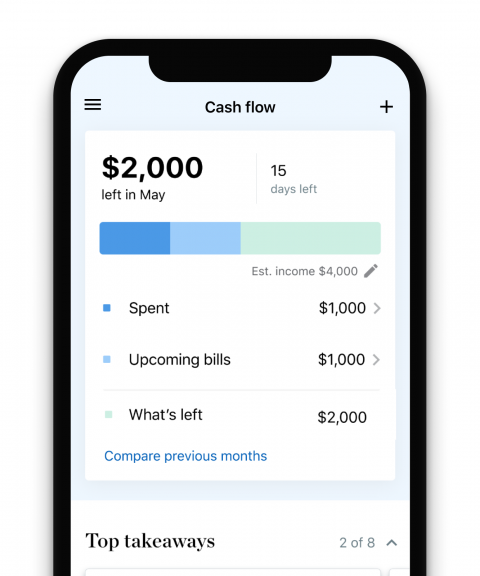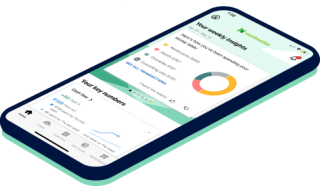Planning what to buy is essential for efficient and cost-effective trips to the grocery store. It’s smart to customize a list based on where you do your grocery shopping; you’ll find a different selection at a supermarket than at a wholesale club or neighborhood health food store.
Stocking up on toilet paper, laundry detergent and pasta sauce might be better left for places like Costco. But what should you buy at your standard grocery store? Focus on basics like fruits, vegetables and dairy.
What to buy when grocery shopping
“Work with your family to establish some high-value staples that can be repurposed in many ways and use those as the base of your grocery list,” recommends Alex Ammar, a certified financial planner in Montverde, Florida. Foods like chicken and potatoes can serve as the foundation for multiple recipes.
You can turn to the U.S. Department of Agriculture and the U.S. Department of Health and Human Services’ Dietary Guidelines for Americans for more inspiration. The guidelines include several “core elements” for a healthy diet: vegetables, fruits, grains, dairy, protein foods and oils.
Use these categories as a framework for your family’s list, keeping allergies or dietary restrictions in mind.
Before you build a budget
NerdWallet breaks down your spending and shows you ways to save.

Fruits and vegetables
Fresh, in-season produce typically costs less and offers better quality and taste than produce grown out of season. You can also find affordable year-round produce, such as bananas (less than 30 cents each at some stores at the time of this writing) and carrots. Ammar suggests buying whatever fruits and veggies are on sale to get a diversity of micronutrients over time.
Canned and frozen options are great, too, because they last a long time and are less likely to go to waste.
“I love to buy frozen corn when fresh corn is not in season. It’s generally going to be less expensive. Nutritionally, it’s great, you can do a ton with it,” says Rachel West, a registered dietitian and senior nutrition editor at eMeals, a meal-planning app. “The work is already done for you because it’s already off the cob.”
Proteins
Foods such as meat, poultry, seafood and eggs are good sources of protein. Nuts, seeds, lentils and soy products like tofu are also protein-rich.
West says that because meat is often the most expensive part of a meal, cutting back even once a week can save you money if you’re a big meat eater. When buying meat, she recommends getting the cuts you like in a higher quantity when there’s a sale.
“If you see something on sale, stock up on it, put it in your freezer, if you can,” West says. “That way you can kind of ration it out to keep those costs low.”
Grains
The bread at the grocery store might not match the quality of your local bakery, but it likely will cost less, especially if you buy the store brand. Other grains like rice and dry pasta are budget-friendly, simple to cook and have a long shelf life.
Dairy and dairy alternatives
Milk, yogurt, cheese and other dairy products support vitamin and calcium intake and can be used in a variety of dishes. You can buy items like milk and shredded cheese in larger sizes or when on sale to save money. Freeze extras to make them last longer.
To meet the USDA’s healthy diet guidelines, opt for fat-free or low-fat dairy products, or look for nondairy products that have a similar nutritional value, such as soy milk.
Oils
Pick up oils for cooking, baking or flavoring, such as olive oil and vegetable oil. Purchasing bigger bottles will usually be cheaper per unit. For example, Walmart’s Great Value classic olive oil sells for 36 cents per fluid ounce for the 17-ounce size compared with 31.2 cents per ounce for the 101-ounce bottle. However, know whether you’ll use up a particular type of oil before it goes rancid or develops an off-flavor.
Other items to consider
As you grocery shop, you may also want to grab additional items that you use regularly, such as seasonings, to stock your pantry.
Not every grocery store will have the best prices or widest assortment of certain goods like household cleaning and beauty products. But if you need something in a pinch and have room in your budget, it can be worth adding to your cart, too.
Get more financial clarity with NerdWallet
Monitor your credit, track your spending and see all of your finances together in a single place.

How to protect your budget at the grocery store
-
Plan your meals. Arrive at the grocery store with specific items in mind and stick to your list. The USDA’s MyPlate website features budget-friendly foods and recipes to help shoppers plan what to buy. There’s also no shortage of social media accounts, blogs and apps dedicated to meal planning. Knowing what ingredients you’ll use, and how much you need, can help you right-size purchases to avoid food waste.
-
Don’t shop hungry. Going to the grocery store on an empty stomach can lead to buying more than you planned. As Ammar puts it, “hungry minds make for impulse food purchases.”
-
Shop the perimeter. West says that the groceries you’ll find around the store’s perimeter, such as fresh fruits, are less likely to have seen rising costs due to inflation than those in the interior. Foods stocked in the center aisles are typically less-healthy processed or convenience items like chips and premade sauces.
-
Buy store-brand items. Store-brand products are often less expensive but comparable in quality to name-brand products. Sometimes they’re even made by the same manufacturer, just sold under different labels.
